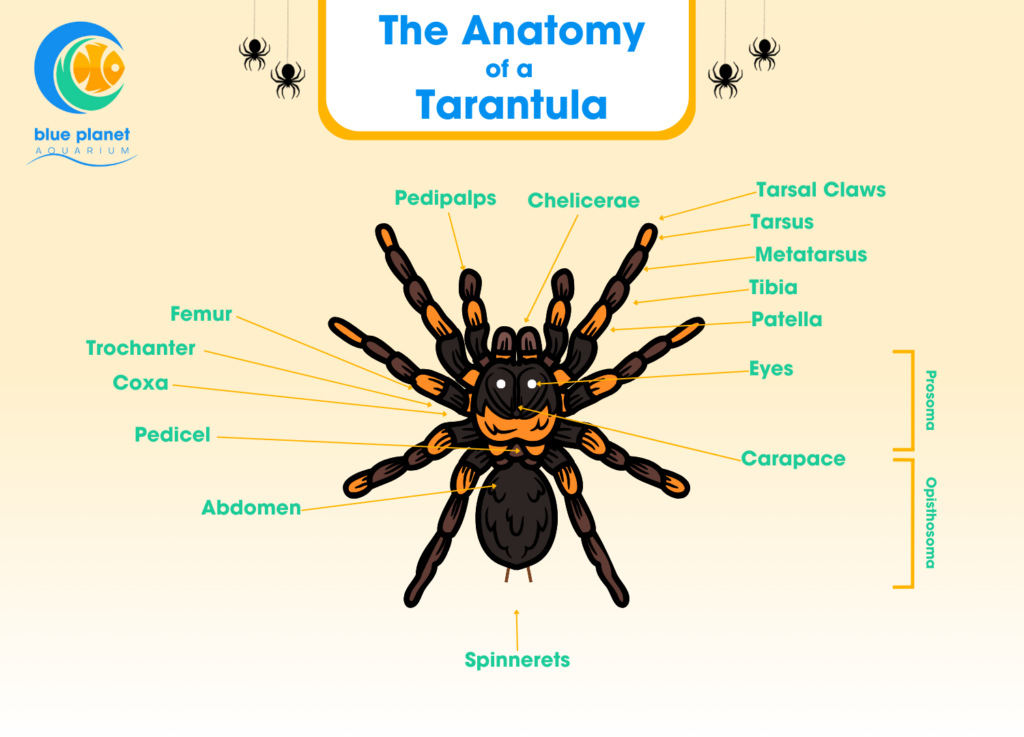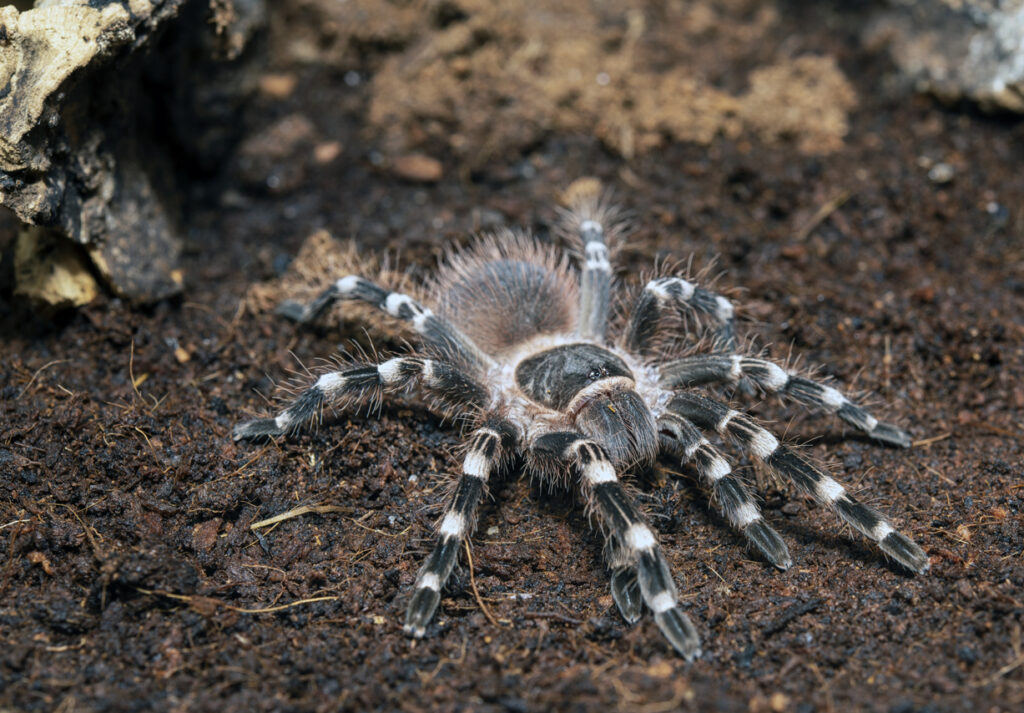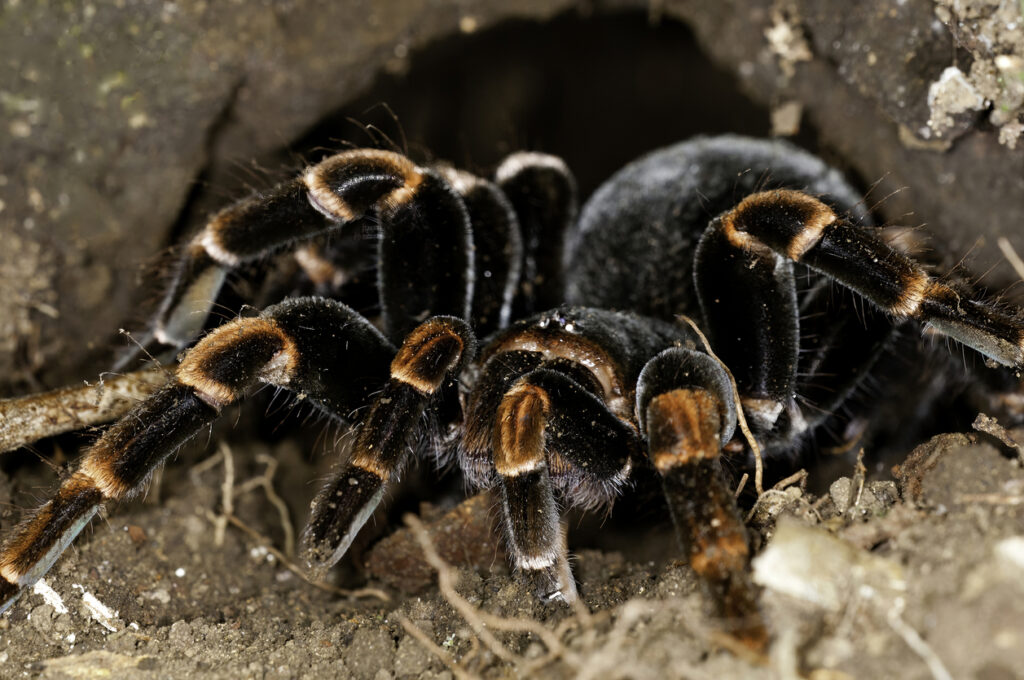To some, tarantulas are scary, creepy crawlies who should be kept away from, but for others, tarantulas are furry little creatures that are actually very interesting. In this blog, we’ll learn all about the tarantula anatomy and what makes them so fascinating, not to mention why you shouldn’t be so scared of them!
There are thousands of spider species, and within the tarantula (Theraphosidae) family there are around 800 different types. Tarantulas are typically found across the world’s tropical and subtropical regions, and are more common across the likes of Central and South America, Australia and Southern Asia. You may or may not be pleased to know that only one species of tarantula is found in the UK, which is the rare purse-web spider (Alypus affinis).
Where will you find tarantulas?
If you’re hoping to get a good look at what a tarantula looks like, you might struggle. Tarantulas usually come out at night, as this is when they hunt for prey, and they are mostly underground dwellers or arboreal, which means they live in trees. Tarantulas are solitary creatures by nature, coming together only to mate.
However, you might just be able to catch a glimpse of a real life tarantula at our Venom exhibit! Blue Planet Aquarium is home to the Tarantula Tree Tower, inviting you to crawl inside and come face-to-face with these fascinating creatures. We’ve also put together a handy visual to help you understand the anatomy of a tarantula, which you can view below! You can also download it here, if you’d like to print it out.

What is a tarantula’s body like?
The first thing you’ll notice about a tarantula is that it can be very hairy! These hairs are actually called urticating hair or setae, and they are designed to protect the spider. The tarantula can flick these when it feels threatened. Interestingly, Old World tarantulas do not possess urticating hairs – only the New World species.
A tarantula’s body is made up of two parts, just like other species of spider. These are the opisthosoma (abdomen), and the prosoma. The latter is the spider’s head and midsection (thorax), which is fused together. Its 8 legs are connected to the prosoma.
A tarantula also has two pedipalps, which resemble shorter legs but are used for sensory purposes, not movement. They help the tarantula to feel their environment. Between the pedipalps, you will find two chelicerae. These are mouthparts that can be used in catching prey, and they also contain the venom sacs.

How many eyes does a tarantula have?
You might assume that tarantulas just have two eyes like most other animals, but you’d be wrong! Tarantulas actually have 8 eyes, just like many other species of spider. These eyes are grouped into pairs, with the main pair hard to miss as they are the largest and sit in the middle of their heads.
There are 4 smaller eyes between these large ones, and two final eyes with one on each side of their head. All of the tarantula’s eyes are strategically positioned to help the spider get a good look at its surroundings.
Despite having this many eyes, a tarantula’s vision isn’t very good! They can make out movement and differentiate light from dark, but that’s about it. Instead, they depend on their other senses.
Are tarantulas venemous?
Tarantulas are able to inject paralysing venom into their prey before tucking into them with their fangs. However, a New World tarantula’s venom is mild and weaker than a bee. With that in mind, if a tarantula were to bite you, it would be painful but harmless! Old World tarantulas have been known to have a more potent venom, with a much more painful bite. The venom is delivered through the chelicerae. It is referred to by keepers as “medically significant”.
Tarantulas aren’t aggressive by nature, and will typically only bite in self-defence when provoked or threatened.

Can tarantulas spin webs?
While most spiders spin webs to catch their prey, tarantulas do not. Instead, they spin silk for different reasons. Tarantulas have two pairs of spinnerets – these are appendages that can produce silk.
Tarantulas will spin silk to line and protect their burrows, particularly at the entrance, to stop any unwanted visitors from getting near. They also sometimes use their silk webs as additional protection with moulting and shedding their exoskeleton.
The webs are also an important part of the mating ritual, and can be used to help the tarantula anchor on surfaces.
Tarantulas are more fascinating than they are scary, and we hope you’ve learnt something new about these brilliant creatures. Don’t forget you can see them for yourself at our Venom exhibit – book your tickets online today and plan your next visit!
